Curry is a relatively small and spicy shrub that you can easily cultivate in your garden and taste in cooking. It usually grows in subtropical areas and is much easier to care for than any other tree. The leaves are widely used in curries as well as in various soups due to their aroma.
Often a question is heard in the mouths of new gardeners why my curry leaf plant is not growing? There are several things you need to look at to answer this question – the lack of adequate sunlight, the acidity of the soil, the absence of adequate nitrogen, calcium, and magnesium, and temperature differences can hamper the growth of curry plants. Today we will discuss the answer to your question as well as what tips to follow on how to grow curry leaves faster. Let’s get started then.
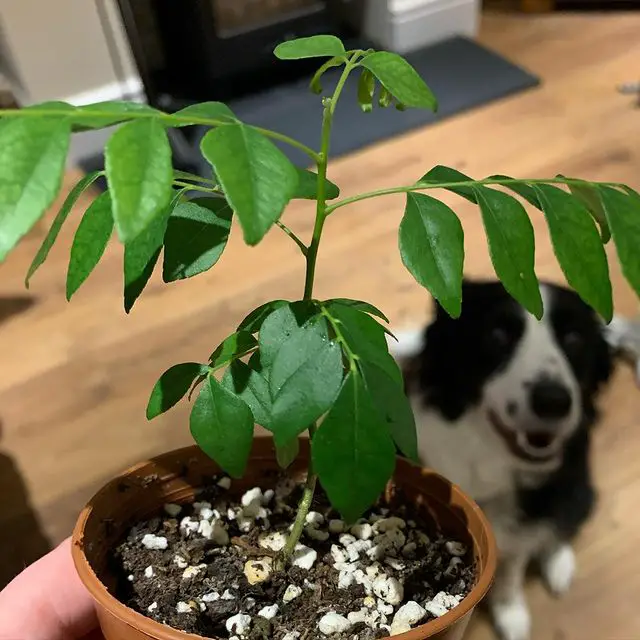
Why is my curry leaf plant not growing?
1. Outbreaks of winter
Winter outbreaks disrupt curry leaves and curry growth. In winter, due to lack of sunlight and low temperatures, curry leaves turn yellow, which is called chlorosis. Chlorosis means that a few days after the onset of winter, all the leaves on the tree will fall off and there will probably be no leaves on the tree. Only the stalks of the tree will remain. It is a very common issue in winter.
How to take care of curry plants in winter?
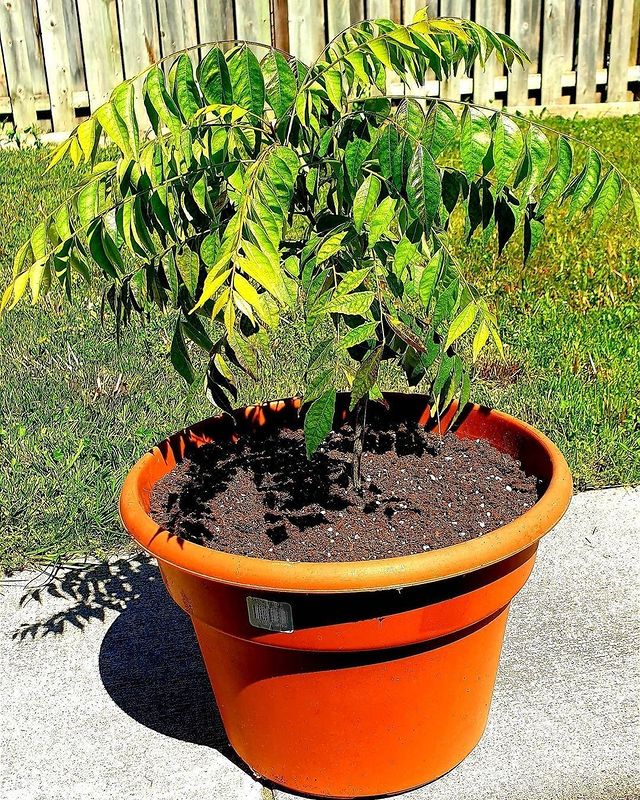
Winter is a very sensitive time for curry plants. This time of winter is a time of rest for the curry plants. Watering the plant every three to four weeks in winter. It will not be necessary to give too much water. Things that can’t be done in winter – can’t be transplanted, can’t pruning, can’t use fertilizer. Fungus, Mites, Spiders, White Flies are very common parasitic attacks in winter, so the plant must be taken care of properly, otherwise, the plant will die.
Things that can and cannot be done on a curry tree during the winter
| Type of work | In winter (Temperatures below 40 degrees Fahrenheit) |
|---|---|
| Transplanting | Can’t be |
| Pruning the stalks | Can’t be |
| Fertilizing the tree | Can’t be |
| Watering the trees | Light lukewarm water should be given every three to four weeks |
| Exposure to sunlight | It should be brought out of the house during the day to get sunlight and inside the house to avoid cold at night. |
| Arrangement of artificial light | Have to |
| Care for safety | Action should be taken against aphids, spiders. mites, ants, and various types of fungi. |
As a winter care, you can keep your curry plant outdoors during the day and indoors at night. The best alternative for winter is to keep the plant in a warm place near the south-facing window, with adequate temperature and sunlight. If you plan to keep curry leaves indoors then you must invest some money to buy a good quality indoor grow light. This will keep your plant happy inside the house.
If for some reason it is not possible to take the tree inside the room, then the roots of the tree should be covered with black or dark cloth. Wrapping with black cloth can increase the temperature of the tree up to 5 degrees Celsius. In this way, the tree can be preserved and the leaves of the curry shrub can also be preserved in winter with adequate temperature.
Keep curry in the light during the day and indoors at night to keep away from cold. If for some reason you need to go out for a few days, be sure to ask someone to take care of the tree. With lukewarm water instead of cold water, you can maintain the temperature of the plant.
2. Low presence of sunlight
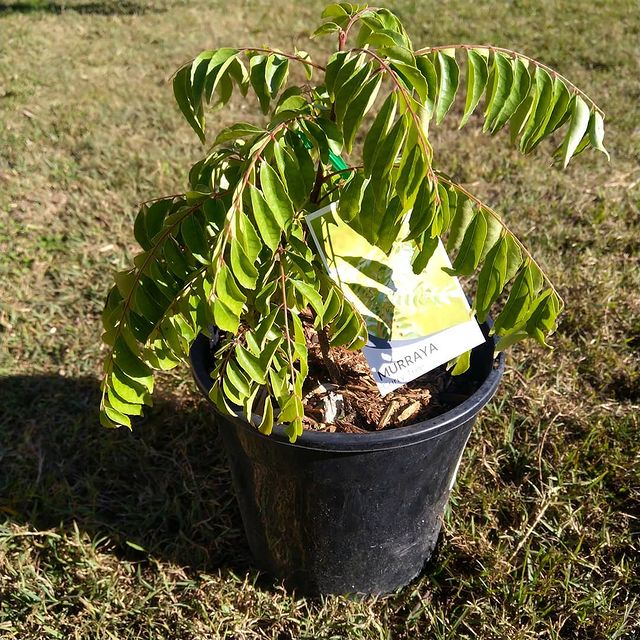
Curry plant growth will be hampered even if it is less in the presence of sunlight. In the absence of sunlight, the leaves of the tree will bend downwards and in some cases, the leaves may wrinkle. Usually, below 40 degrees Fahrenheit is critical for the growth of a curry plant so try to give your curry plant full daylight and you can use artificial white light to increase daylight. It is very important to use this artificial white light especially in winter when the temperature is low and the presence of daylight is also low.
3. Low temperature
Decreased atmospheric temperature will impede the growth of curry leaves. When the normal temperature of the atmosphere drops, the leaves of the curry tree will stop its activity. The leaves will lean towards the ground, all the leaves will fall off. To survive the low winter temperatures, the curry plant prunes its leaves by itself. In this way, the tree survives by pruning its leaves in winter. When the temperature of the atmosphere decreases, watering at the base of the tree should be stopped or watering at the base of the tree should be done every three to four consecutive weeks. If too much water is given, the roots of the curry tree may rot and die. In extra cold weather, the temperature of the tree can be increased with lukewarm water at the base of the tree.
If the normal temperature of the atmosphere drops below 35 degrees Fahrenheit, the temperature should be increased by wrapping the base of the tree with black cloth or some paper. Curry plants usually require six to eight hours of daylight (daylight for curry leaf plant). If the amount of daylight is low, that means, when the sunlight falls below 6 to 8 hours, you should try to increase the amount of daylight by using artificial white light. In this way it is possible to protect the curry tree and its leaves from low winter temperatures.
4. Pruning Requirements
Lack of pruning of stalks hinders the normal growth of curry. Pruning is done once a year in spring. Pruning of stalks is a very good means for healthy and fast growth of plants. If your tree does not grow as desired, you can prune the stalks several times a year.
5. Lack of adequate fertilizer
Lack of adequate amounts of fertilizer in the soil will impede the growth of curry plants. You need to ensure adequate fertilizer in the soil to accelerate the growth of your curry plant. The funny thing is that most fertilizers can be made at home. Fertilizer prepared in the kitchen is the most beneficial natural ingredient for curry leaves. The fertilizers that are easily obtained from the kitchen and can be used at the base of the curry tree are discussed below.
Homemade fertilizer for curry leaf plant
- Sour yogurt or buttermilk
Sour yogurt or buttermilk works very well for curry leaf growth. Sour yogurt or buttermilk is a homemade fertilizer, it contains a sufficient amount of nitrogen which makes the plant green, stimulates the leaves and provides adequate nutrients to the leaves. Also, due to the presence of sufficient amounts of bacteria and probiotics in sour yogurt and buttermilk, the plant can easily fight against germs and fungi like powdery mildew and white fungus.
How to use sour yogurt and buttermilk?
Take 1 gallon of rice washing water or clean water in a container. Add 1 tablespoon sour yogurt or 1 tablespoon buttermilk to the water and stir the mixture well. You can use this mixture once a week.
- Rice washing water
For many generations, rice washing water has been regarded as a beneficial fertilizer for growing curry leaves. Rice wash water contains vitamin B which helps in the growth of roots. White or brown rice washing water used for cooking can be saved and later rice washing water can be used instead of regular water irrigation at the base of the curry tree.
- Eggshell crushed
Eggshells are a popular homemade fertilizer for curry plants. Eggshells contain a sufficient amount of calcium which accelerates the growth of the plant and makes the plant green, fresh, and strong. The calcium obtained from the eggshell also helps in the growth of the roots of the plant and as a result, the plant grows faster.
How to use crushed eggshells?
Store unused eggshells in a ziplock bag after cooking. Crush the preserved eggshells with a hammer. Sprinkle the crushed eggshells on the soil surface of the curry plant and mix them carefully in the soil. Mix the eggshell powder with the soil in such a way that the roots of the curry tree are not damaged and the roots are not cut off. You can use eggshells from one to two inches above the surface of the soil. The use of crushed eggshells every two to three weeks has been very successful in the growth of the plant.
- Use of Asafoetida
Extensive use of Asafoetida can be observed in new leaves and sprouts of curry plants. It acts as a stimulant for the leaves of plants. A mixture of buttermilk with Asafoetida can be used for best results to grow curry leaves faster.
How to use Asafoetida?
Mix half a teaspoon of Asafoetida powder with water mixed with buttermilk or yogurt. You can use the mixture once a week at the base of the plant.
The above-mentioned homemade fertilizers are good for the plant but they are not enough for the growth of the plant alone. In addition to the homemade fertilizers mentioned above, the following granular and non-granular, and liquid nutrients are very important to accelerate the growth of the plant.
- Fish emulsion and Fish fertilizer
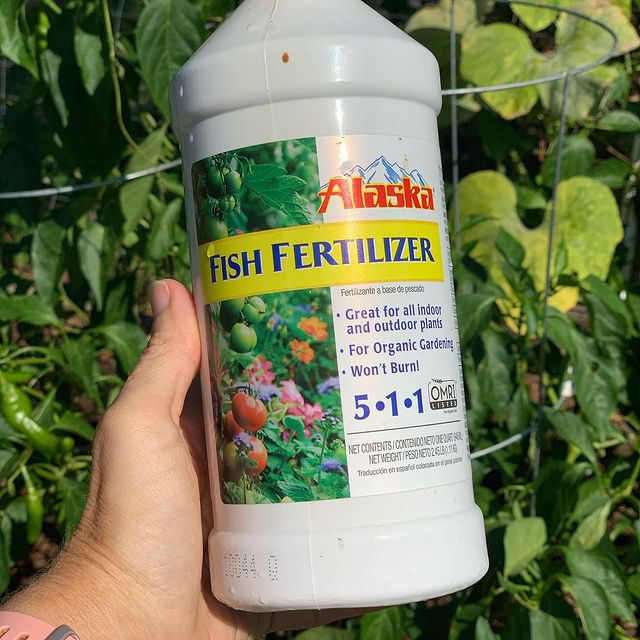
Curry trees are usually cultivated for curry leaves. The use of nitrogen in growing green leaves is undeniable. Fish emulsion is a high-level nitrogen-rich liquid organic fertilizer. In addition to high levels of nitrogen, fish emulsions contain phosphorus, potassium, various mineral mixtures, and ample trace elements. Fish emulsion is a liquid nutrient that gives faster results than granular fertilizer and it is easily absorbed by the roots of the plant so that the leaves of the plant grow very fast and new leaves grow.
How to get good results using fish emulsion?
Always follow the bottle-level instructions. If the instructions for use of the product are not available, shake the bottle before use so that the various minerals inside the bottle can easily mix with the liquid in the bottle. Then mix 2 tablespoons of fish emulsion with one gallon of water and spray at the base and leaves of the curry plant.
Since fish emulsion has a strong odor, be sure to take the plant out before use and do not collect leaves from the plant for at least two weeks after use. It is best to use once a week and avoid applying excess fertilizer before and after use.
- Blood Meal
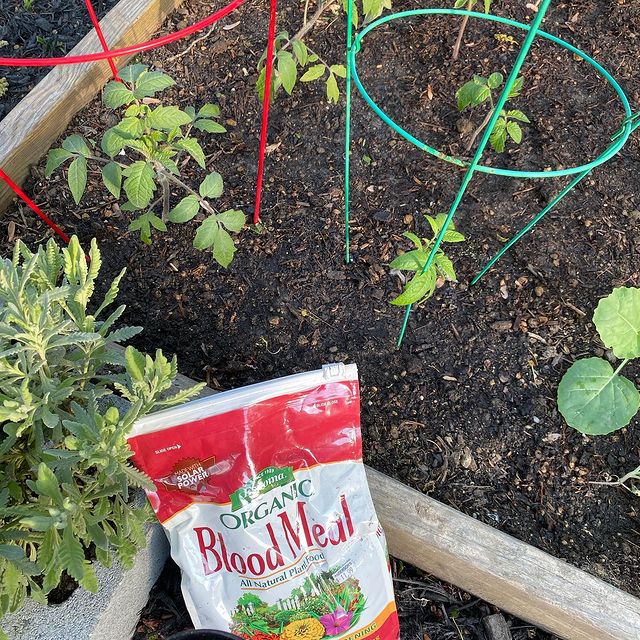
Blood meals are commonly found as a by-product of cattle, dogs, and slaughterhouses. It is an inert, dry organic fertilizer so that the presence of high levels of nitrogen can be noticed. The amount of nitrogen in the blood meal is usually 13.25%, the amount of phosphorus is 1% and the amount of potassium is 0.6%. Blood meal makes the leaves of the plant green, accelerates leaf growth, and helps new leaves to grow. As it is a powdered substance so it takes a few weeks for the plant to break down and make it edible. It is better to use blood meal as a supplement with liquid fish emulsion. Blood meal can be used as a long-term nutrient source for plants.
How to apply blood meal?
In early spring it is sufficient to apply 1 tablespoon of blood meal to the soil for a 14-inch diameter pot. Blood meal should be used in proportion to the size of the vessel. Blood meal cannot be applied directly to the roots of the tree.
When the sun is at the top of the tree in the middle of the noon, the blood meal should be sprinkled on the soil of the place as much as the shadow of the tree covers the space so that it does not come in direct contact with the roots and there is no damage to the roots. After use, the soil should be moistened with a little water and the soil should be irrigated daily in phases.
- Rotten cow dung
Rotten cow dung is a self-contained organic fertilizer for any plant, including curry trees. Rotten cow dung improves soil structure. Helps to retain water in the soil and helps tree roots to penetrate into the soil. Before using rotten cow dung, one must make sure that the cow dung is dry, otherwise, it can burn the tree.
How to use rotten cow dung on curry plants?
It is sufficient to use one trowel of cow dung in a 14-inch diameter container. The amount of cow dung can be more or less depending on the size of the pot. Before using rotten cow dung, it is important to make sure that the cow dung is completely dry. Cow dung should not be used on plants under any circumstances unless it is dry. Apply decomposed cow dung on the top layer of soil around the tree without damaging the roots and mix well with the soil. Then moisten the soil with a little water and irrigate the soil in phases every day.
Note: Dung manure should not be used unless the plant is one year old. Using cow dung manure on curry trees less than a year old can burn the tree.
- Seaweed fertilizer
Seaweed fertilizer helps in the rapid growth of curry leaves. Seaweed or kelp fertilizer contains more than 60 trace minerals that act as a growth hormone for plants. Very good change can be noticed in the use of seaweed fertilizer twice a month. There is no substitute for seaweed fertilizer to keep the leaves green, fresh and eradicated. Seaweed fertilizer is available in both powder and liquid form. It is better to use liquid fertilizer for the rapid growth of the plant.
How to apply seaweed fertilizer to plants?
Follow the instructions on the bottle. If there are no clear instructions on the product, shake the bottle before use. Add 2 tablespoons of liquid seaweed fertilizer to one gallon of water, mix the mixture well. Spray the mixture at the base of the curry plant, on the top of the leaf, and on the underside of the leaf. Use once a week for best results. Avoid applying additional fertilizer before and after use.
- Liquid chelated iron
Yellow spots are often seen on the leaves of curry trees. These yellow spots are caused by iron deficiency. When the leaves of the curry tree turn yellow, the leaves are not able to produce the required food through photosynthesis, which results in food deficiency of the tree, and in many cases, the tree may die. If yellow spots appear on the leaves of the tree, liquid chelated iron should be used.
Curry trees generally prefer acidic soils. Maintain soil pH levels between 6.4 and 6.9. Chelated liquid iron is a modified form of solid ion that is absorbable and easily digested by plants.
How to use chelated liquid iron curry leaves?
Follow the bottle level instructions. If you do not have clear instructions, you can mix 16 ounces of chelated liquid iron well in 1 gallon of water and apply foliar on the leaves of the tree up to 1000 square feet. Use it every few days until the leaves turn green.
- Epsom salt
If the leaves of all curry plants turn yellow instead of dark green, then it is understood that the plant is deficient in magnesium. Epsom salt, or magnesium sulfate, is a good supplement to magnesium. Epsom salt does not directly act as a fertilizer. It helps in the production of chlorophyll in the leaves of the tree and helps to bring the yellow leaves of the tree back to green color.
How to use Epsom salt?
Dissolve 2 tablespoons of Epsom salt in 1 gallon of water and spray once a month on the roots and leaves of the plant.
- Gypsum
The role of gypsum in the development of leaves and roots is undeniable. Gypsum is a great source of calcium. Gypsum helps in the rapid growth of the plant by increasing the overall calcium in the plant.
How to use gypsum fertilizer?
Sprinkle two to three handfuls of gypsum on the soil around the plant and mix well with the soil. Make sure there is no damage to the roots of the tree. You can use gypsum fertilizer with chelated liquid iron once a month.
Symptoms of nutrient deficiencies in plant foods
| Symptoms | Causes |
|---|---|
| The leaves turn light green and yellow. | Nitrogen deficiency |
| In the absence of more, the leaves of the tree turn yellowish-brown. | Nitrogen deficiency |
| Flowers and fruits are small in size. | Nitrogen deficiency |
| Fruits and leaves are small and dry. | Nitrogen deficiency |
| The rate of absorption of other components of the plant decreases. | Nitrogen deficiency |
| The stems and roots of the tree do not grow. | Phosphorus deficiency |
| Plant cell division rate decreases. | Phosphorus deficiency |
| The leaves are scattered on the tree. | Phosphorus deficiency |
| The amount of protein in the plant decreases. | Phosphorus deficiency |
| The number of flowers and fruits is small and small in size. | Phosphorus deficiency |
| The tree does not flower and bear fruit. | Phosphorus deficiency |
| The leaves of the tree often look dark green but the growth of the tree is stopped. | Phosphorus deficiency |
| The edges of the leaves look burnt. | Potassium deficiency |
| Plants are easily diseased. | Potassium deficiency |
| Insect and spider attacks on plants. | Potassium deficiency |
| The rate of photosynthesis decreases. | Potassium deficiency |
| The tree fell in a slight drought. | Potassium deficiency |
| The growth of the tree is hindered, but the leaves remain green. | Potassium deficiency |
| The leaves of the tree turn brown. | Potassium deficiency |
| Root growth does not occur. | Potassium deficiency |
| The leaves fade and turn brown. | Potassium deficiency |
| Dead spots fall on the leaves. | Potassium deficiency |
| The tips of the young leaves are twisted. | Calcium deficiency |
| Growth stops at the top of the tree. | Calcium deficiency |
| The fragility of the leaves and stems increases. | Calcium deficiency |
| When the tree is pulled, the roots come out easily from the soil. | Calcium deficiency |
| The leaf picked from the plant falls off in a short time. | Calcium deficiency |
| The leaf brightness is lost. | Calcium deficiency |
| The growth of the tree stops. | Magnesium deficiency |
| The inter-veins of the tree fade. | Magnesium deficiency |
| The size of the fruit is small. | Magnesium deficiency |
| The tree loses its vitality and brightness. | Magnesium deficiency |
| Diseases, insect attacks increase. | Magnesium deficiency |
| The leaves of the tree are yellow. Later the old leaves turn yellow. | Sulfur deficiency |
| Plant cell division is disrupted and plant growth is reduced. | Sulfur deficiency |
| The size of the tree is reduced. | Sulfur deficiency |
| The trees on the ground are light green in color. | Sulfur deficiency |
| The trunk of the tree is dry instead of alive. | Sulfur deficiency |
| Fruit maturation is delayed. | Sulfur deficiency |
Some additional precautions for rapid grow curry leaves faster using fertilizers
- For best results you need to use a balance of granular, non-granular and liquid fertilizers. Never apply excess fertilizer. Excessive fertilizer application is detrimental to the plant. The leaves of the tree may burn and in many cases the plant may die.
- Water the plants regularly but stop watering for a few days before applying the fertilizer. When the soil is dry, apply fertilizer to the soil so that the thirsty plants will receive the required nutrients from the soil along with the water.
- Never apply fertilizer to trees while indoors. Fertilizer is applied to the tree when the tree is outside the house and the tree is in the growing season.
- Spray foliar on the leaves of trees in cold and cloudy weather. Scorching sunlight can burn wet tree leaves with foliar spray.
- Curry leaves are usually infested by aphids, ants and other fungi. Use regular neem oil on the leaves which will help fight against powdery mildew, black and white fungus.
- Never use fish emulsion indoors due to excessive odor, as this can spread bad odor indoors. Bring the plant out of the house and apply the fish emulsion.
- Fence around the tree after application of fertilizer. Or keep your pet away from trees. The strong smell of manure, fish emulsions and egg shells can make your pet curiously dig the soil.
Frequently asked questions
How can I make my curry leaves grow faster?
Why is my curry leaf plant not growing?
Regular fish emulsion fertilizer: 2 tablespoon / 1-gallon water, Seaweed fertilizer: 2 tablespoon / 1-gallon water, Liquid chelated iron: 16 ounces / 1-gallon water per week. Once should be applied on the top and bottom of the leaves.
How long does curry leaves take to grow?
On the other hand, the process of making seedlings through cutting is called asexual or vegetative reproduction. In this method, the stems of the plant take root within three to four weeks and the leaf growth of the curry leaf plant is completed within two months. The asexual reproduction of the curry leaf plant is recognized worldwide as similar seedlings of the mother plant are found.
How often should I water curry leaf plant?
However, it should always be kept in mind that water cannot be given to the plants while water is present in the soil. If the plant-soil feels dry with the hands, then the curry leaf plant should be watered otherwise there is no need to water.
Last Words
We have thoroughly discussed the issues that you should follow for the rapid growth of the curry tree. We have discussed the role of all types of vitamins, minerals, and fertilizers required for curry. Curry plants are usually hindered in their development due to lack of nutrition. You will be able to increase the growth of the plant if you use the fertilizer in accordance with the above-mentioned things and give the necessary nutrition to the plant at the right time. We hope you are aware of the issues.

